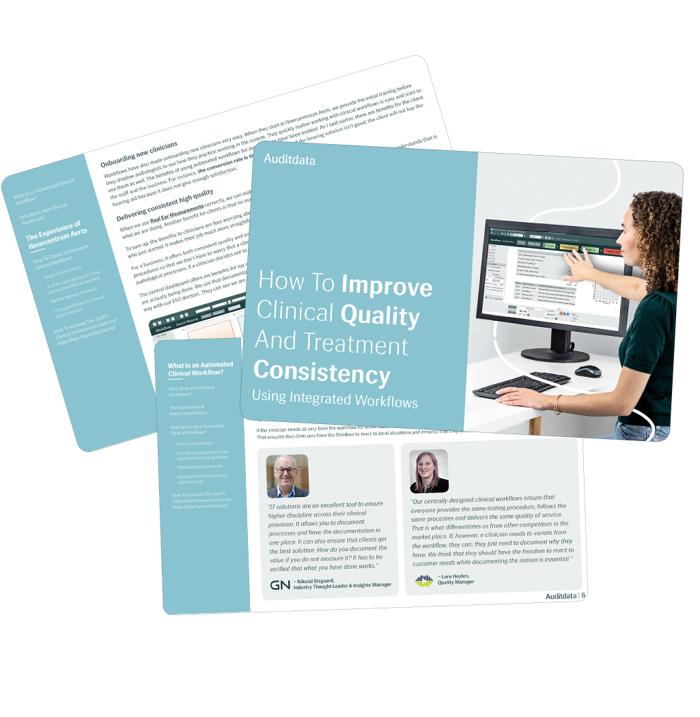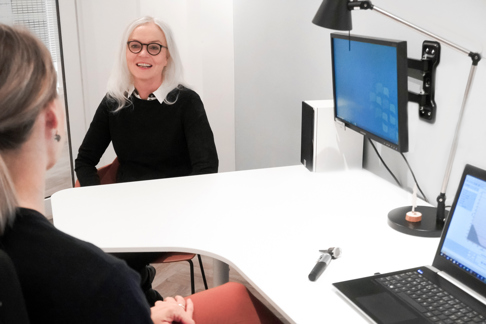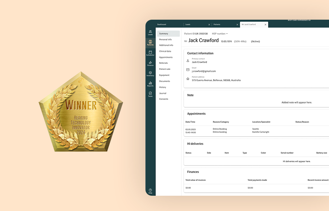
In private hearing clinics, as in any retail, there is a relatively high staff turnover. That’s a pain – but just part of life when running a hearing clinic. This means if you wish to stay efficient, you need a process for onboarding new staff members. Gathering everything in one place and tracking their onboarding progress is key to an efficient and successful onboarding program that matches your brand and values.
What Should Staff Be Trained In?
Retail audiology is rather complex and involves technical, interpersonal, audiological, sales, and operations skills. This is a tough combination, and it can be challenging to find staff with all of these qualifications. When audiologists start in your hearing center, they at least know about audiology. The other skill sets will depend on their individual work experience and their personality.
It’s important for your hearing clinic to have a checklist of what the new staff member should know (or learn), and start ticking it off on the first day. There should be a clear introduction plan for the first few weeks, including ongoing follow-ups on the checklist to make sure that the new employee is truly onboarded, understands your hearing clinic’s culture and processes, and is comfortable starting to meet clients on their own.
We Suggest Training Staff In The Following Areas:
2. Working procedures, including the in-hearing center customer journey
1. Audiological Equipment
Even though your newly hired hearing care professional is an audiologist by trade, it is important that they know all about the specific audiological equipment in your hearing clinics. They need to clearly understand which procedures they’re expected to perform and how the hardware and software you have in your hearing clinics function. As a starting point, most audiological equipment vendors have great e-learning tools that can help the onboarding process. Check out our e-learning courses here.
Before seeing customers on their own, it’s wise to have the newly hired audiologist train using the hardware on one of your staff members to ensure that it’s used as intended and in a customer-friendly manner.
How do you, as a hearing clinic owner, make sure that the audiological equipment is used correctly and that the right procedures are followed after the training? Set up clinical workflows to help with training and to ensure best practices are implemented by all employees across your hearing centers.
Automating these workflows will enhance compliance, making the training and onboarding much easier. If you get new equipment or alter the workflows, it is easy to change information from a central hold and have all of your hearing care professionals follow new procedures in the hearing clinic. Having an automated process means you can track performance, survey how each hearing professional is doing, and compare performance across your staff.

2. Working Procedures
The next thing you should focus on is the working procedures of your hearing clinic. What is usual business to you may not be what your newly hired staff is accustomed to doing. Therefore, be clear about your working procedures and expectations.
For instance, what is the standard customer journey for new clients in your hearing clinic? How much time do you expect audiologists to spend with a new client for an interview? What is the sequence of tasks in the appointments and which clinical procedures do you usually conduct? Be transparent about your hearing center’s working procedures to make sure the new audiologist understands your expectations and standard operation procedures (SOPs).
3. Hearing Solutions And Fitting Software
Hearing Solutions
Who are your suppliers and which hearing aids provide the best return on investment? It is important that you have a clear solution strategy in your hearing clinics and that your staff knows when to recommend which solution. This could be based on each customer’s lifestyle, preferred price point, or wishes regarding fit and function. Limit the number of solution options you have, which will help your audiologists keep their decision-making simple. We suggest opting to phase out a solution whenever you introduce a new product, which also makes it easier to plan your inventory, have efficient processes, and keep everyone updated on fitting software.
Fitting Software
When a new audiologist starts in your hearing clinic, they will likely be introduced to new fitting software systems and other supplier IT set-ups that are different from what they are used to. As with all new things, this can be a frustrating process, so set aside time to train the new audiologist on this new software. Most hearing aid suppliers have e-learning modules for their fitting software, so utilize these training tools whenever possible. As the hearing clinic manager, make sure that each hearing care professional understands the suppliers you prefer and why. Answer their questions so they’re comfortable with your systems and efficient when using them.
Free Guide
How to Improve Clinical Quality and Treatment Consistency Using Clinical Workflows
In this guide, we take a close look at why centrally controlled, automated clinical workflows make sense and deep dive into the different facets within. Additionally, we will investigate how good data analysis can help activate staff members and make better commercial decisions.

4. Hearing Center Operations
Be clear about the hearing clinic operations and what you expect from the hearing care professional. Train each new hire on the following procedures:
- Buying process of instruments
- Repair processes
- The division of work between the front-desk staff and the audiologist
- The opening/closing procedures of the hearing clinic (alarm, signage, phones, etc.)
- The documents they should complete and deadlines for each
- How a schedule should be booked (blocked-times, type of appointments)
Having a written standard operation procedure (SOP) is essential and makes all of your staff feel comfortable knowing that they are doing what is expected. It’s also helpful to have this SOP as a go-to place when audiologists have questions. This can often be set up as automated processes in your practice management software to make things even more efficient and streamlined.
Making sure you have covered these four steps will enable an efficient onboarding of your new staff. Having a set onboarding process will also make this effort more streamlined - and less stressful - for the rest of your staff.
Other Blogs You Might Enjoy:

Setting Effective Objectives and KPIs for Different Staff Types in Hearing Care
Setting and discussing key performance indicators (KPIs) for hearing care is a tricky business. KPIs require time, effort, and employee buy-in to live up to their high expectations.

11 Tips To Find, Recruit And Hire The Most Amazing Audiologists
If your hearing clinic is looking to hire a new audiologist, you will likely face increased competition since audiologists are so highly in demand. So, how do you set your practice apart from the others and find the perfect fit for your clinic? This blog outlines 11 foolproof tips to attract, recruit, and hire the most amazing audiologists.

Tips & Tricks On Making a Good Impression
This blog will help hearing care providers understand how to convert leads into paying customers in the initial visit by welcoming the client and making a good first impression.
Don't Miss Out On the Latest Insights On Audiology
Sign up today to receive exciting updates, tips, and the latest newsletters from Auditdata.





